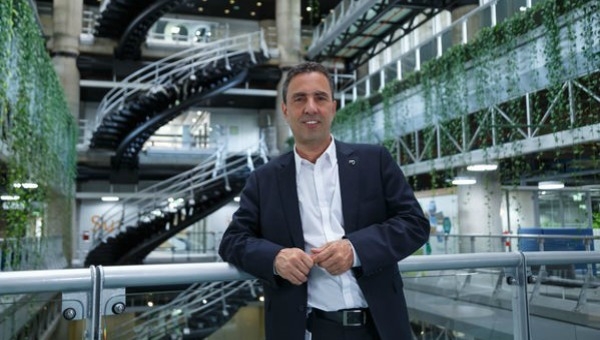EPM Slams Antioquia Gov. Luis Perez Over Hidroituango, ‘Blacklisting’ Claims

In an October 2 press conference, EPM general manager Jorge Londoño de la Cuesta contradicted new claims made by Antioquia Governor Luis Perez over supposed contractor errors or negligence surrounding the troubled “Hidroituango” hydroelectric power project in Antioquia.
Gov. Perez claims that construction contractor Consorcio TIFS didn’t comply with the original schedule for building and then later shuttering the first two of three water-diversion tunnels — and that such delays (and subsequent tunnel closings) eventually led to compensatory speed-up decisions that unfortunately triggered an estimated COP$7 trillion (US$2.33 billion) in cost over-runs.
What’s more, the third diversion tunnel (“GAD” in Spanish initials) built by EPM – which collapsed in April 2018, causing downstream flooding and then emergency measures to avoid a dam collapse – wasn’t built to proper technical standards or capable of handling relatively high water flows, Perez claimed, citing an unpublished study by Universidad Nacional (UNAL).
In addition, Gov. Perez claimed that the explosives subsequently used in a failed attempt to unblock the first two diversion tunnels following the collapse of the “GAD” tunnel” caused dangerous landslides and weakened the rock massif adjacent to the dam, potentially threatening the entire Hidroituango project.
Furthermore, Gov. Perez separately claimed late last month that EPM had used polygraph tests to “blacklist” certain employees under suspicion for leaking potentially damaging financial information — possibly linked to Hidroituango issues — to the governor and certain Medellin City Council members.
That latter claim – flatly denied by EPM’s general manager — provoked the utility to file legal complaints against Gov. Perez and City Councilwoman Luz María Múnera Medina for “calumny and injury” to EPM’s reputation.
As for supposed errors, miscalculations or negligence in the Hidroituango project, Londoño de la Cuesta pointed-out that an independent advisory board had approved the GAD project, contradicting Gov. Perez.
As for the claims about the supposed incapacity of the GAD tunnel to handle high water flows, “Integral S.A.” engineering manager Luis Fernando Restrepo pointed out at the press conference that international technical studies and experience indicated that the tunnel would indeed be capable of handling such flows.
EPM’s Londoño de la Cuesta added that the company is now awaiting results of a technical study by Skava (due in November) to determine whether the GAD tunnel collapse was the result of an undetected geological fault, an engineering design error or a construction error.
Until that study has been completed, it’s “irresponsible” for third parties (such as Gov. Perez) to make “unsubstantiated” claims about the cause of the tunnel collapse and the subsequent economic damage to the Hidroituango project, he said.
Asked whether Gov. Perez is making sensational, conspiratorial claims for political reasons — with 2019 being an election year — Londoño stated that “Hidroituango is a project of national interest and we must work together to move ahead, without promoting particular interests.”
“We invite our partner in this project, the Government of Antioquia, to discuss differences through the appropriate channels available in the partnership, of which both of us are part,” Londoño added. “We are 100% willing to investigate what caused the problem in the Hidroituango project, but we do not admit insults being made against the good name of our company.”
As for whether explosives used in the failed attempt to unblock the first two diversion tunnels might have weakened the rock massif adjacent to the dam, Consorcio CCC commercial director Santiago Garcia pointed out that “in the massif where the project is built, we excavated 2,372,000 cubic meters of rock underground, and there was never any evidence of any damage or instability generated associated with blasting.”
What’s more, engineering studies indicated that the GAD diversion tunnel – had it not collapsed last April — would have been sufficient to handle the water flows that earlier had been handled by the two previous diversion tunnels, he said.
















